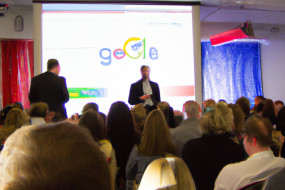
Google’s Knowledge Graph is a tool that has revolutionized the way search engines deliver results to users. It helps users to quickly and easily find the information they need while also improving the relevance of search results. In this article, you will learn about the basics of semantic search and how Google's Knowledge Graph works.
What is Semantic Search?
Semantic search is a revolutionary technology that seeks to understand the meaning of phrases and keywords in the context of a search query. This means that search engines can interpret the intent behind the search as well as the words used. Instead of looking for keywords that match user queries, semantic search uses analysis of the relationships between words and phrases to deliver more helpful and relevant results. This has led to an increased focus on context, intent, and natural language processing, which allow search engines to go beyond surface-level matching of keywords.
The Benefits of Semantic Search
The main benefit of semantic search is that it delivers better search results. By understanding the intent behind a query, search engines can provide more contextually relevant results. This means that users are more likely to find the information they need on the first page of search results, which saves time and frustration. Semantic search also helps search engines to better understand the relationships between entities, which means they can provide richer and more diverse results to users.
What is Google's Knowledge Graph?
Google's Knowledge Graph is a technology that powers its search engine. It uses semantic search to understand the relationships between people, places, and things. By doing this, it can provide quick and accurate information to users. For example, if a user searches for 'Barack Obama', Google's Knowledge Graph will provide basic information like his age, place of birth, and occupation, as well as related entities like 'Michelle Obama' and 'Democratic Party'. The Knowledge Graph is constantly evolving, making it easier for users to find the information they need.
How Does Google's Knowledge Graph Work?
Google's Knowledge Graph works by analyzing millions of pieces of data and using this information to build a database of entities and the relationships between them. This allows it to understand the context of a search query and provide relevant results. Google's Knowledge Graph also draws on data from trusted sources like Wikipedia, Dictionary.com, and World Bank to ensure the accuracy of its results. In addition, it uses machine learning to continually improve its accuracy and to add new entities as they become relevant.
Conclusion
Google's Knowledge Graph is a powerful tool that has changed the way search engines deliver results. By embracing semantic search and natural language processing, it helps users to find the information they need more quickly and easily. This has made the search experience more relevant and more enjoyable. As Google's Knowledge Graph continues to evolve, we can expect even more exciting developments in the world of search.
















